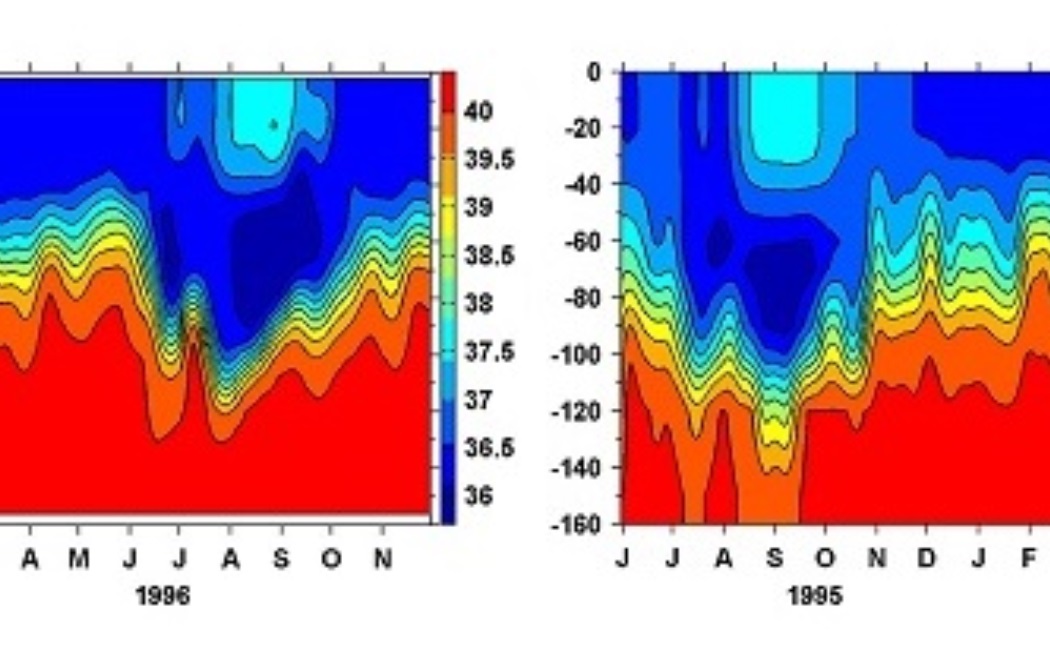


22 June, 2019
KAUST researchers, led by Ibrahim Hoteit, have used advanced computer simulations to explore seasonal and interannual water exchanges between the Red Sea and the Gulf of Aden. These simulations, focusing on the Bab al-Mandab Strait, reveal critical insights into how water and salt move between the two bodies, which influences oceanographic processes and the Red Sea's ecosystem.
In winter, a fresh upper layer flows from the Gulf of Aden into the Red Sea, while a saline lower layer moves in the opposite direction. In summer, the exchange becomes more complex with a shallow, warm surface layer and a deep, weakly flowing salty layer, surrounded by fresh, cold water from the Gulf of Aden.
The simulations found significant yearly variations in the timing and duration of these patterns. The summer water exchange is increasing by 1.45 days per year, while the winter exchange is decreasing by 1.22 days per year. These variations have crucial implications for the Red Sea's thermohaline structure and ecosystem functionality.
The team's findings were validated by comparing simulations with data collected between 1995 and 1996 in the Bab al-Mandab Strait. These simulations are the first-ever realistic high-resolution models of Red Sea water exchanges and offer key insights for the long-term management of the region's ecosystem in the context of climate change.
🔗 Read more on KAUST Discovery